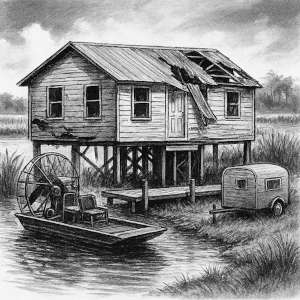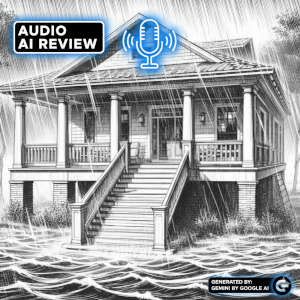AI Resources
Forced Mortgage Payoff and Disaster Recovery Grants Explained
Understand how Forced Mortgage Payoff (FMP) affects homeowners after disasters, impacts HUD CDBG-DR grant eligibility, and interacts with FEMA insurance payouts. Learn how to document involuntary payoffs and avoid Duplication of Benefits penalties.
By Murray Wennerlund, published , updated .
Month 2 — Forced Mortgage Payoff and Disaster Recovery Funding.
A Forced Mortgage Payoff (FMP) occurs when a homeowner's disaster insurance payout is used by the mortgage lender or servicer to pay off the remaining mortgage balance—rather than being released to the homeowner for repairing or rebuilding the disaster-damaged home. This action is considered forcible or compulsory under the terms of the mortgage agreement.
Importantly, this practice is rooted in federal lending policy designed to protect against loan default. When a property is deemed substantially damaged or condemned, the lender may classify the event as a risk of ownership change. This designation can appear in servicing records for federally backed loans—such as those held by Fannie Mae or Freddie Mac—and may trigger internal protocols that prioritize debt recovery over property restoration.
Understanding FMP: Definition and Triggers
An FMP is triggered when a homeowner with an outstanding mortgage balance is required—under the terms of their loan agreement—to apply insurance proceeds toward the mortgage debt. From the lender's perspective, this protects against default and secures their financial interest.
Lenders, including those backed by Fannie Mae and Freddie Mac, may invoke internal policies when the homeowner is deemed "at risk of default" or "at risk of ownership change."
Triggers for Forced Payoff
Definition and Purpose
An FMP is triggered when a homeowner with an outstanding mortgage balance is required—under the terms of their loan agreement—to apply insurance proceeds toward the mortgage debt. From the lender's perspective, this protects against default and secures their financial interest.
Lenders, including those backed by Fannie Mae and Freddie Mac, may invoke internal policies when the homeowner is deemed "at risk of default" or "at risk of ownership change."
Triggers for Forced Payoff
The decision to enforce an FMP is often tied to the economic feasibility of repairs, as defined in the mortgage's security instrument.
- Impaired Security:Insurance proceeds may only be used for restoration if repairs are "economically feasible" and the lender's "security is not lessened." If these conditions are not met, the lender is directed to apply the proceeds to the debt.
-
Substantial Damage or Condemnation: If repair costs exceed 50% of the home's pre-disaster market value or the home is condemned, the lender may determine that restoration is not feasible.
Example: Reconstruction costs of $300,000 vs. an NFIP payout of $150,000 may trigger an FMP, as the homeowner lacks sufficient funds to rebuild.
How the Lender Gains Control of Funds
After a covered loss, the insurance company issues a two-party check—naming both the homeowner and the mortgage lender or servicer.
- The homeowner must sign the check and send it to the lender.
- Once delivered, the homeowner loses legal control of the funds.
- As a named payee (1st lien holder), the lender has full authority to apply the funds toward the mortgage balance without consulting with homeowner.
Impact on Disaster Recovery and Duplication of Benefits (DOB)
The most significant consequence of an FMP is its effect on Duplication of Benefits (DOB) calculations for federal recovery grants, such as HUD's Community Development Block Grant–Disaster Recovery (CDBG-DR) program.
-
HUD Guidance:
HUD's June 20, 2019 guidance (Docket No. FR-6169-N-01) states that funds are not considered "available" if the homeowner lacks legal control. If the mortgage requires insurance proceeds to be applied to the unpaid principal, those funds do not reduce CDBG-DR eligibility. -
Proof Challenges:
Despite HUD's clarity, many state programs (e.g., Louisiana's) require a letter from the lender confirming the payoff was "forced" or "involuntary."- This requirement stems from outdated FEMA policy (2011).
- Major lenders (US Bank, Wells Fargo, Chase, Quicken Loans) often refuse to issue such letters, citing lack of policy language.
FMP and CDBG-DR Funding Restrictions
CDBG-DR funds cannot be used to pay off a mortgage. They are strictly intended to cover unmet housing needs, such as rehabilitation or reconstruction.
Homeowners who believe their insurance payout was involuntarily used for an FMP must document their lack of control through an appeal process. Without proof, the insurance funds may be wrongly counted as available for repairs—resulting in a DOB penalty and disqualification from additional grant funding.
Part 1 of a 3 part series. Click the Continue to next section.

